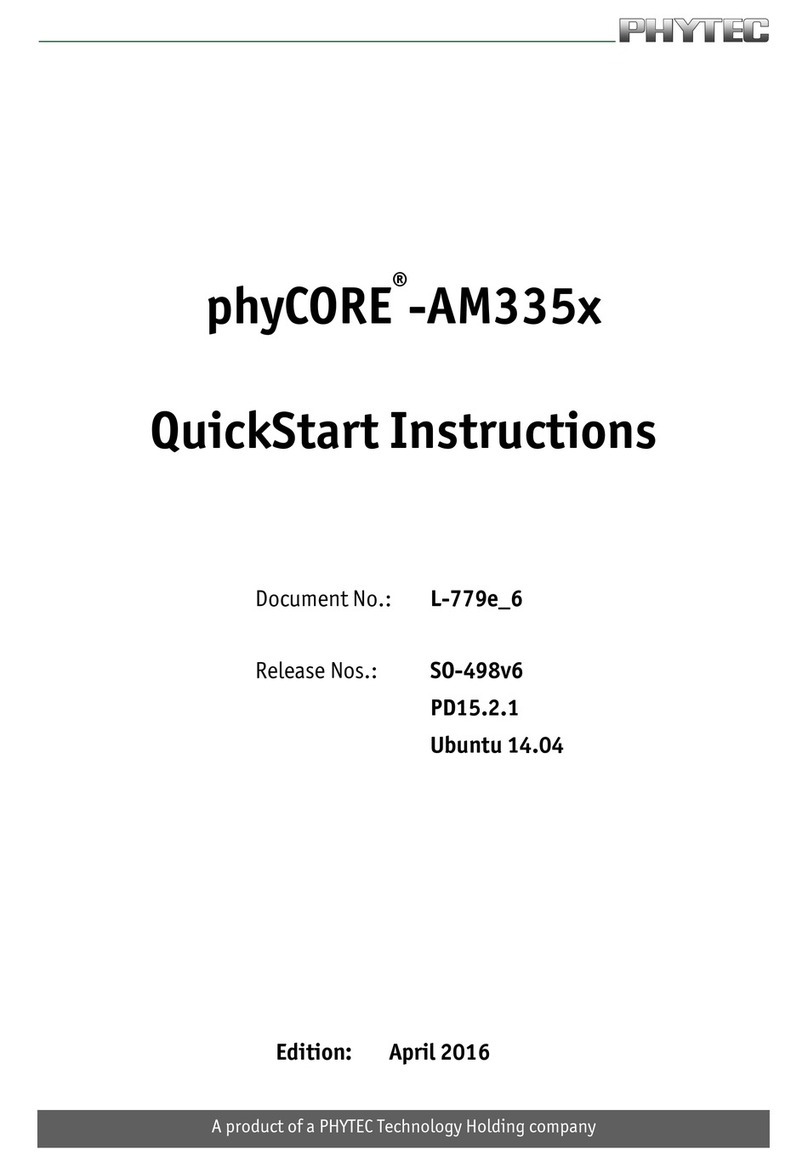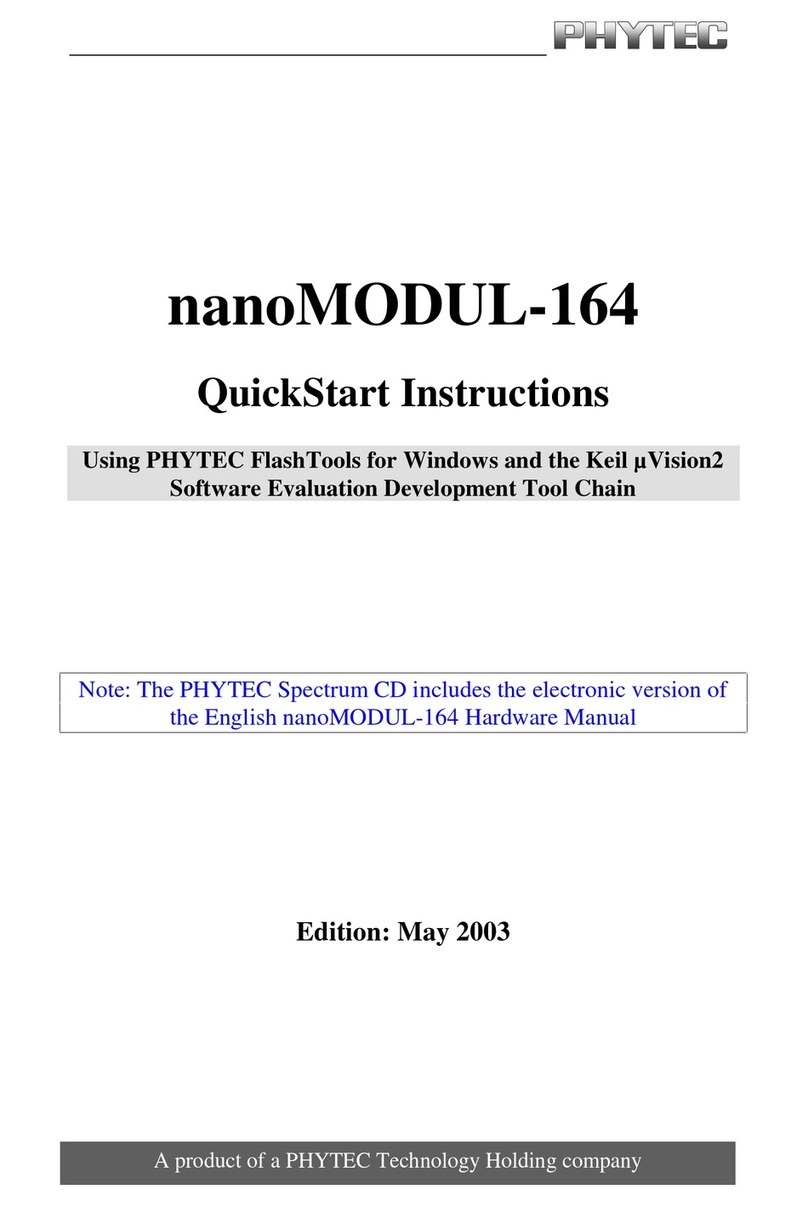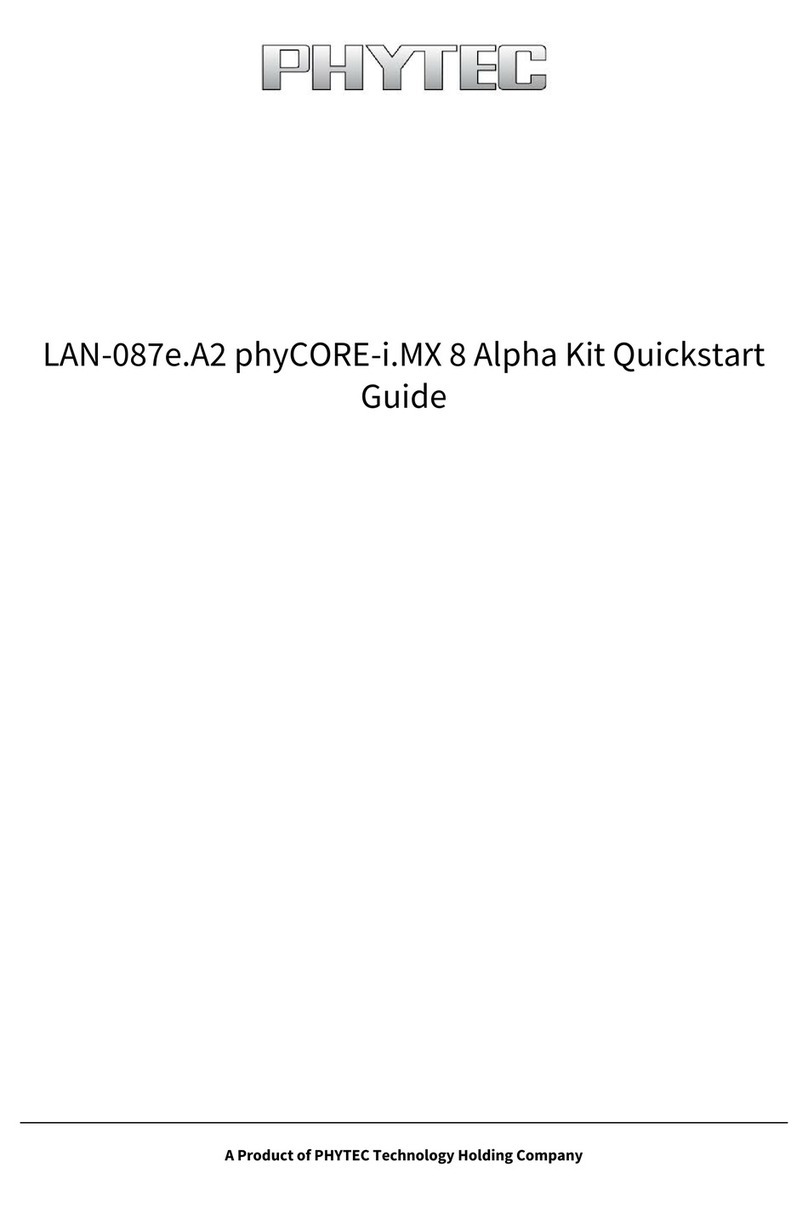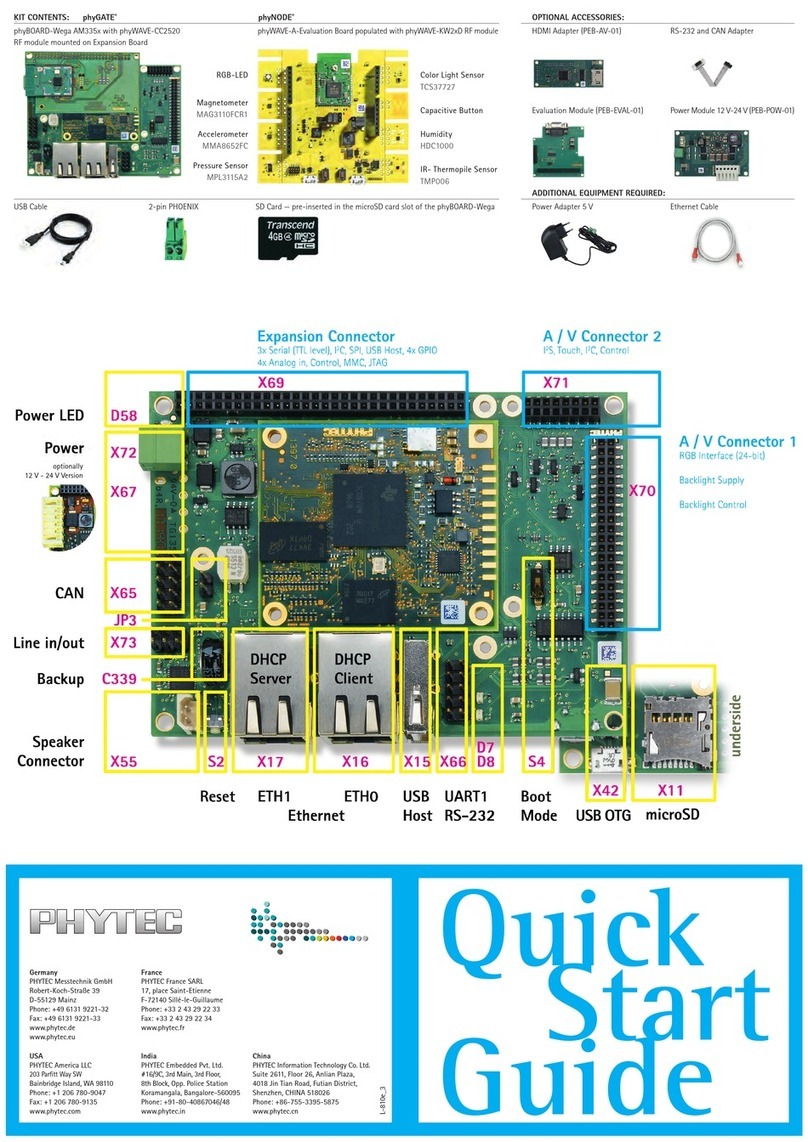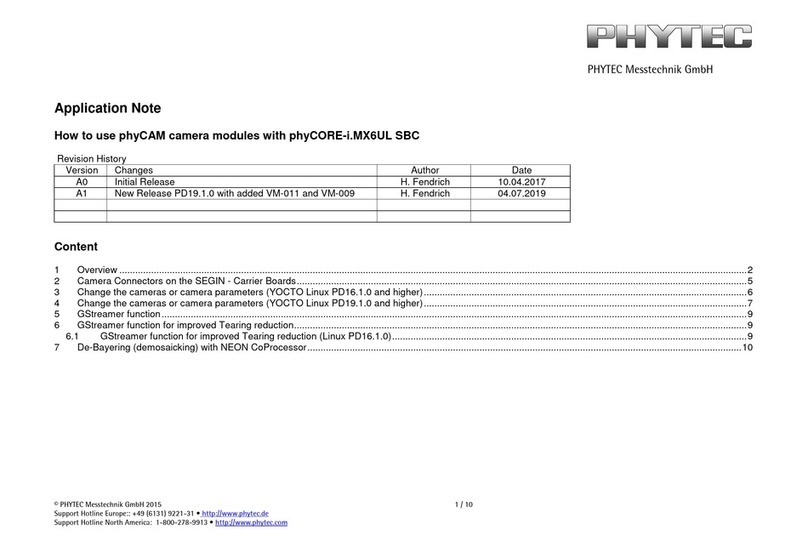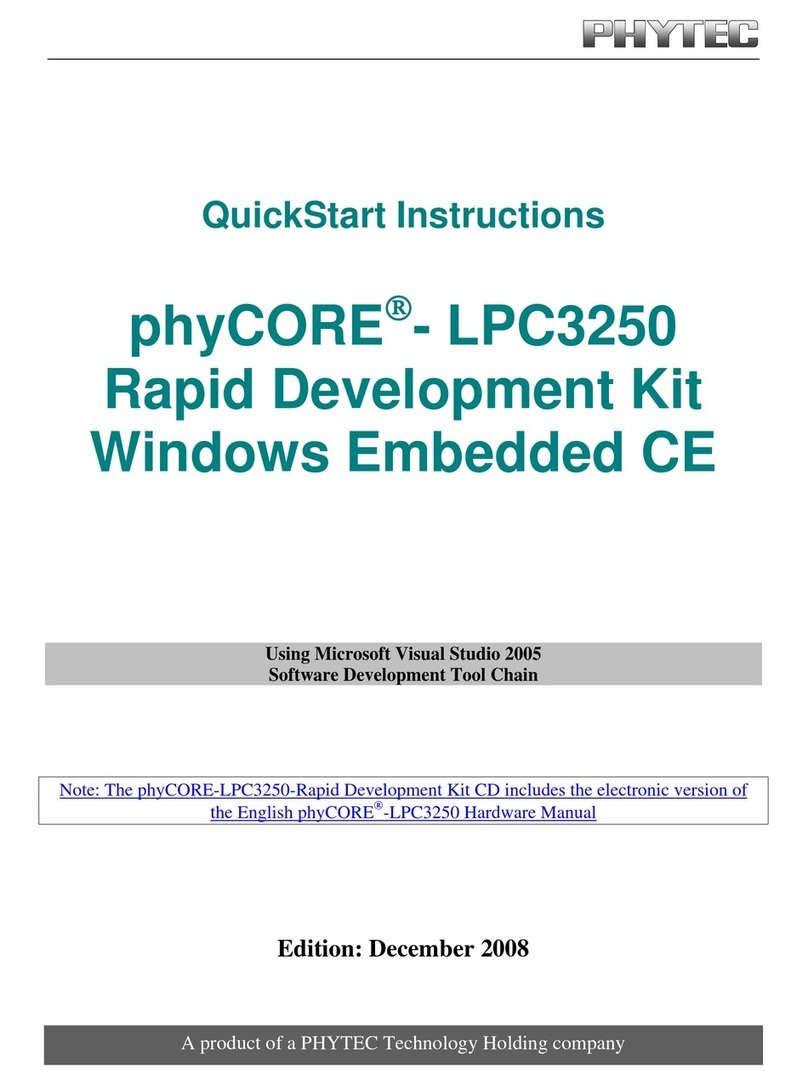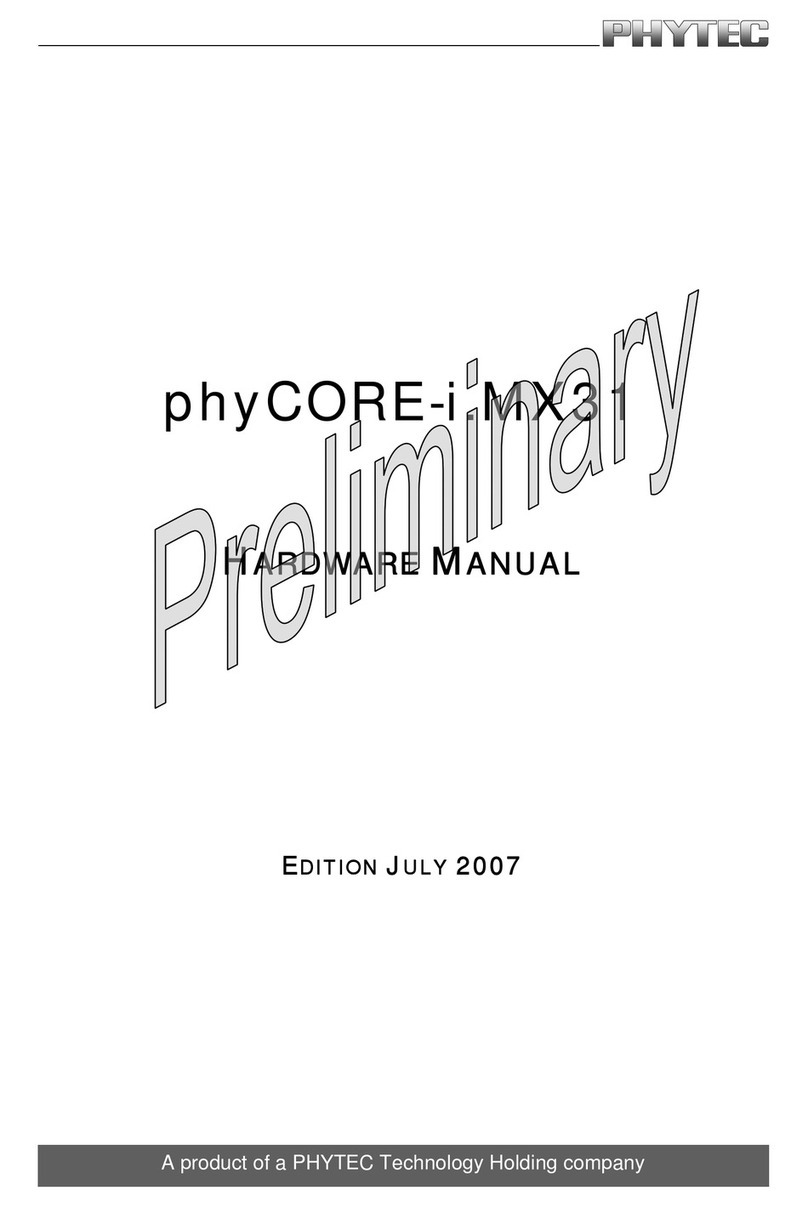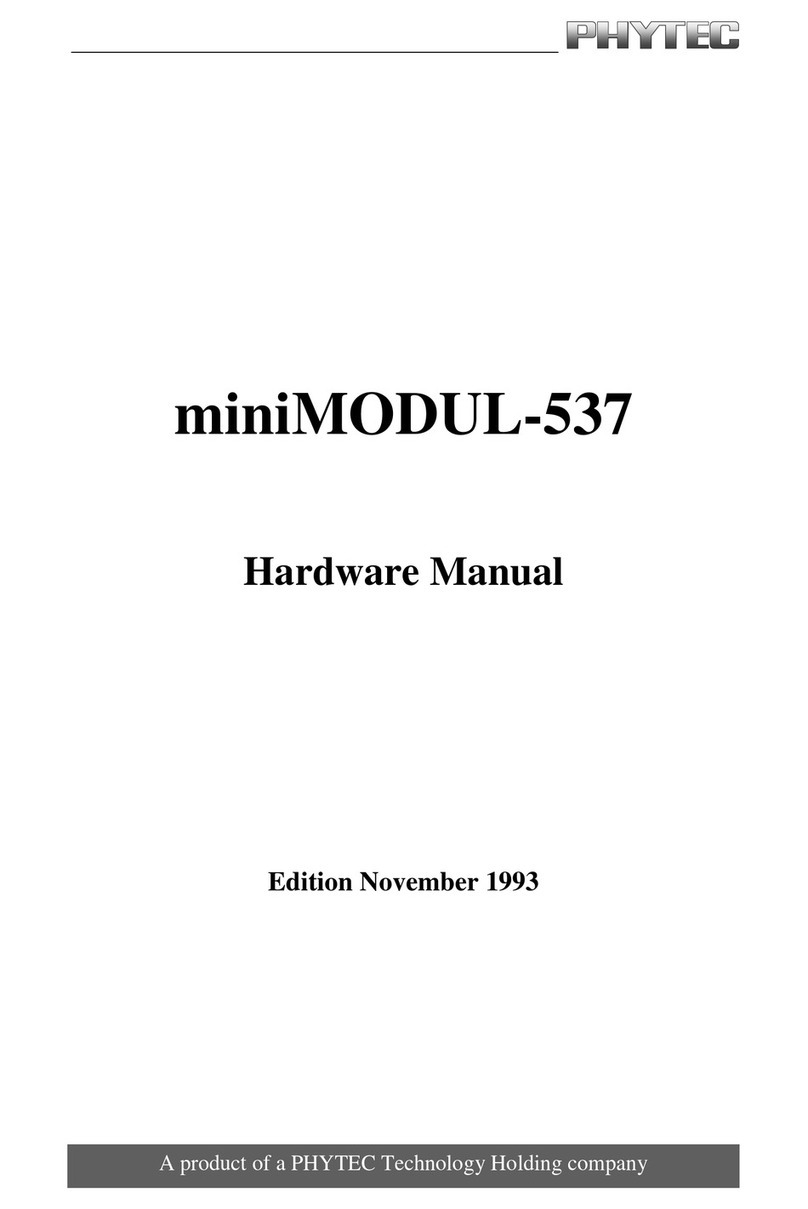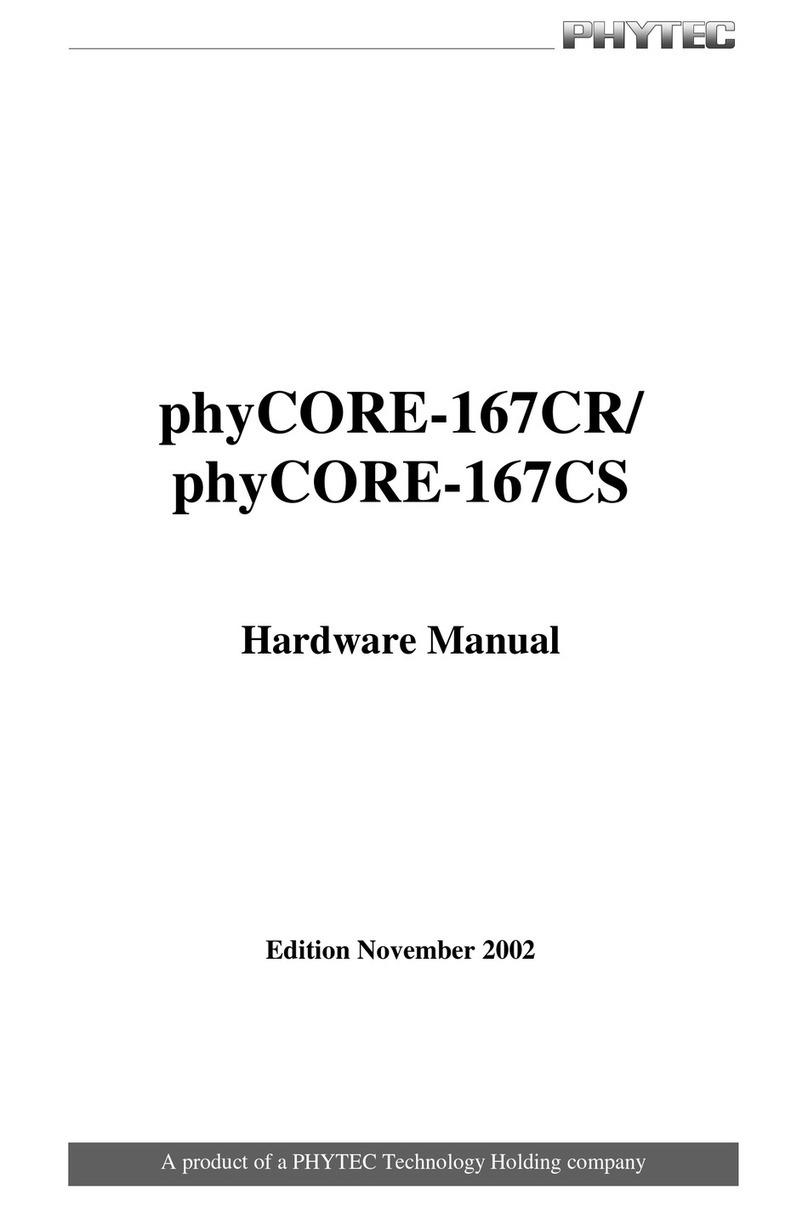
Chapter 1: Introduction
© PHYTEC America LLC 2009 1
L-715e_0
1 Introduction
This QuickStart provides you with the tools and know-how to get the Linux operating system
running on the phyCORE-LPC3250 System on Module. This QuickStart shows you how to do
everything from installing the appropriate tools and source, to building custom kernels, to
deploying the OS, to exercising the software and hardware.
Please refer to the phyCORE-LPC3250 Hardware Manual for specific information on board-level
features such as jumper configuration, memory mapping and pin layout for the phyCORE-
LPC3250 System on Module and Carrier Board.
1.1 Rapid Development Kit Documentation
This rapid development kit (RDK) includes the following electronic documentation on the enclosed
phyCORE-LPC3250 Rapid Development Kit CD:
• The PHYTEC phyCORE®-LPC3250 Hardware Manual
• Controller User’s Manuals and Datasheets
• This QuickStart Instruction guide
1.2 Professional Support Packages Available
PHYTEC backs up our Rapid Development Kits with a Start-Up Guarantee. We invite you to make
use of our free Technical Support concerning installation and setup of QuickStart demos until any
kit start-up problem you might encounter is resolved. For more in-depth questions, we offer
technical
support
p
ackages
for
purchase.
Please
cont
act
our
sales
team
at
[email protected] todiscuss the appropriate support option if professional support beyond installation and setup is
required.
1.3 Overview of this QuickStart Instruction
This QuickStart instruction gives a general Rapid Development Kit description, as well as all of the
necessary instructions required to deploy embedded Linux on the phyCORE-LPC3250 in both a
standalone configuration, and a networked development configuration. This QuickStart takes you
from deploying pre-built images provided in the kit on an SD Card, to building a custom image and
deploying everything over the network suitable for the often changing development environment.
The structure of this QuickStart is as follows:
Chapter 1 - Introduction: This chapter provides an overview of this QuickStart instruction, system
requirements, and kit contents.
Chapter 2 - Getting Started: This chapter guides you through installing the PHYTEC Spectrum CD
software and documentation, preparing the phyCORE-LPC3250 hardware and interfacing a host
PC, and booting the pre-built images included on the SD Card that comes with the kit.
Chapter 3 - Getting More Involved: This chapter provides more in-depth instructions on installing
the Linux build tools, building custom images, deploying images via NAND Flash, SD/MMC Card,
TFTP, and NFS.
Appendix A: This chapter provides some additional information that you may find useful while
working with Linux on the phyCORE-LPC3250 SOM. This chapter includes links to the NXP Linux
BSP page, links to learning more about the Linux Target Image Builder, NAND Flash layout, using
DHCP, and enabling Ethernet in the pre-built images.
